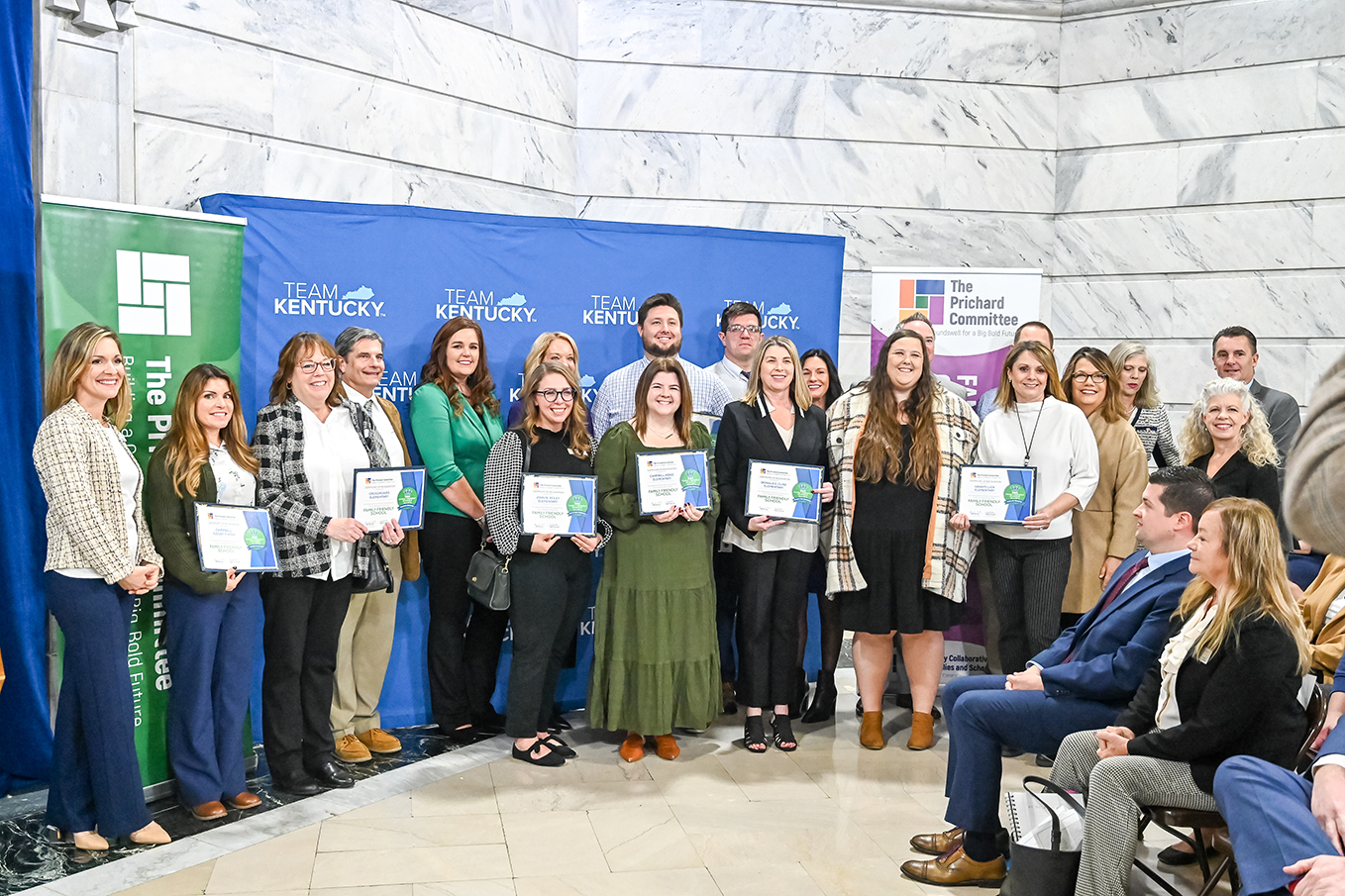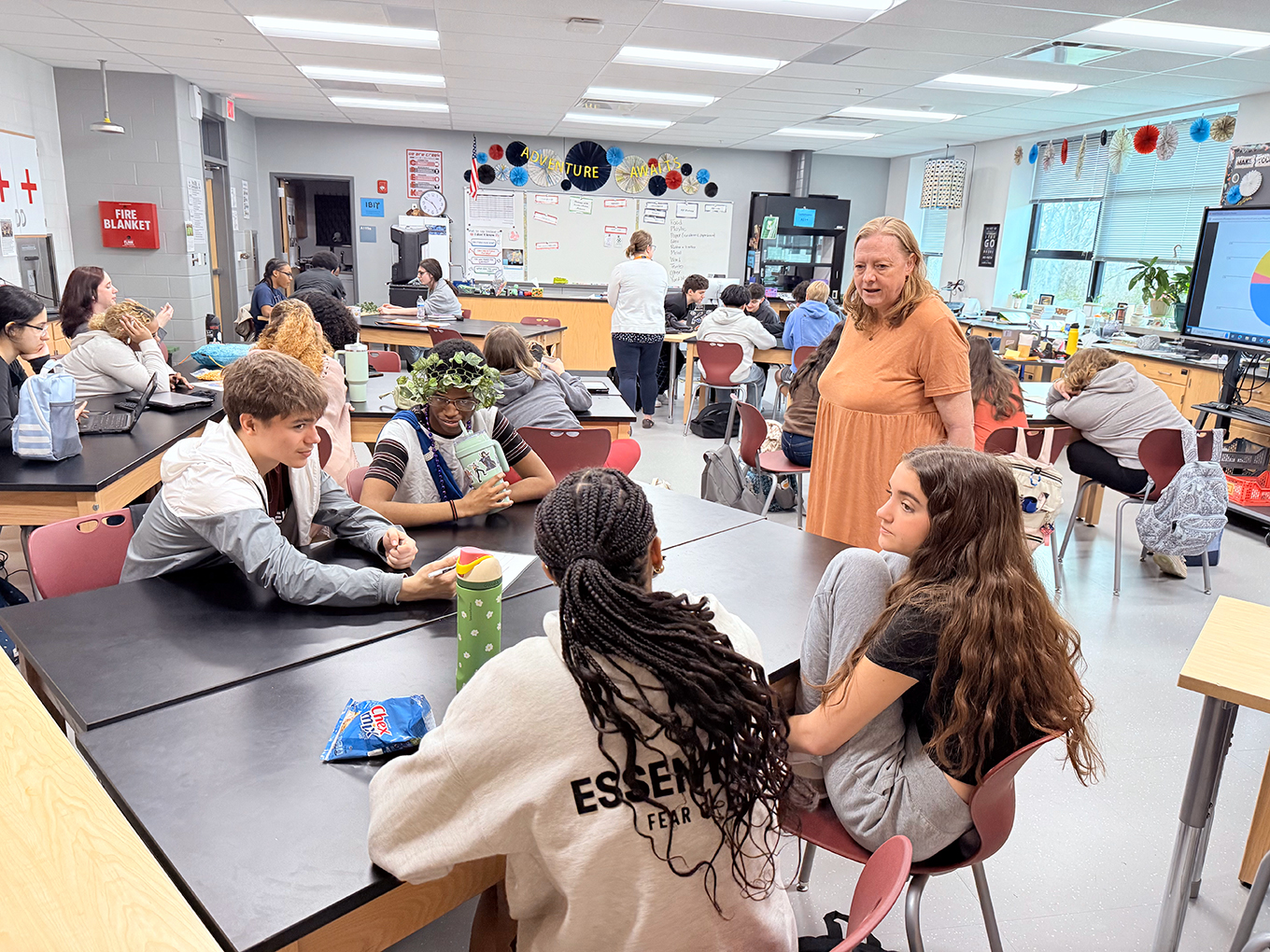This is one of a series of guest columns from teachers implementing the Kentucky Core Academic Standards for Science this school year.
By Marcia Sharp
marcia.sharp@cville.kyschools.us
This is a very exciting time for elementary teachers in Kentucky as we implement the Kentucky Core Academic Standards for Science in our classrooms. If you love teaching science as much as I do, it seems that these standards were written just for you.
Often I have heard elementary teachers say, “I don’t have the time to teach science, I have to teach reading and math,” or “My principal has cut science from our curriculum to allow more time for reading and math skills, as we have to bring up our test scores.” By teaching the new science standards, you don’t have to choose. You get to engage students in authentic science experiences that they love, and at the same time you can easily integrate reading, math, engineering and the arts into your program instead of trying to squeeze science into your day as one more thing you have to teach, or eliminating science altogether from your daily curriculum.
Earlier this school year, as I began studying the standards document for my grade level, I looked at the suggested ELA connections provided for each performance expectation and I found them easy to integrate in my unit. The provided ELA connections found on each standard page prompted me to incorporate technology and reading skills associated with my unit on ecosystems.
During my unit on genetics, not only was it easy to incorporate literacy, but I made math connections as well.
I found a great website for the New Hampshire Fish and Game Department that gave students freedom of choice of independent reading materials related to ecosystems and then facilitated a jigsaw experience where students shared their learning with their classmates. Through the department magazine Wild Times for Kids, students learned about various plants and animals in their natural habitats by engaging in lessons related to reading nonfiction text. This also allowed my students to use higher order reading strategies to develop their comprehension skills.
During my unit on genetics, not only was it easy to incorporate literacy, but I made math connections as well. Students collected data using tally marks about their genetic traits, and then they created graphs to represent their data. Students were able to make real-life connection and gain understanding of how recessive and dominant genes are determined. Students also engaged in a lab in which they planted mustard seeds in a variety of environmental conditions, monitored and graphed the progress of their growth. They then created aliens using engineering standards based on their knowledge of genetics. These experiences fostered the use of higher order thinking skills to make the connections from human genetics to those of plants and other animals as well.
Finally, my student teacher was able to incorporate engineering standards and the arts while teaching about the environment by incorporating “reduce, reuse and recycle” in a real-life situation. Students were asked to bring in recyclable materials that they had at home. Students inundated my classroom with an array of materials, and then they put their engineering skills to work by designing and creating jet packs out of two-liter bottles, Army soldiers and robots from cereal boxes, bird feeders from milk jugs and Coke cans, turtles and ladybugs out of compact discs, etc.
I believe we made progress toward the intent of the standards by teaching science and other core academic standards within the same unit. Third-graders at Campbellsville Elementary are so excited about learning science. They often say it is their favorite class and that they can’t wait for science class. As we build on this excitement and these skills, I know that we are going to see a difference in our students’ lives in the future.
Marcia Sharp is a 3rd-grade science teacher at Campbellsville Elementary School (Campbellsville Independent).





Marcia–I think you’ve hit on a key component of NGSS implementation: elementary teachers need to be given flexibility to teach in integrated, interdisciplinary units. This may require some adjustments for schools that have heavily prescriptive master schedules, but the benefits should far outweigh the costs of these adjustments.
Great ideas! I have been trying to incorporate the new standards into reading, writing and math. Weather and graphing also pair well together. Plus http://www.readworks.org has great leveled passages to read about the subjects you have taught and write the answers.